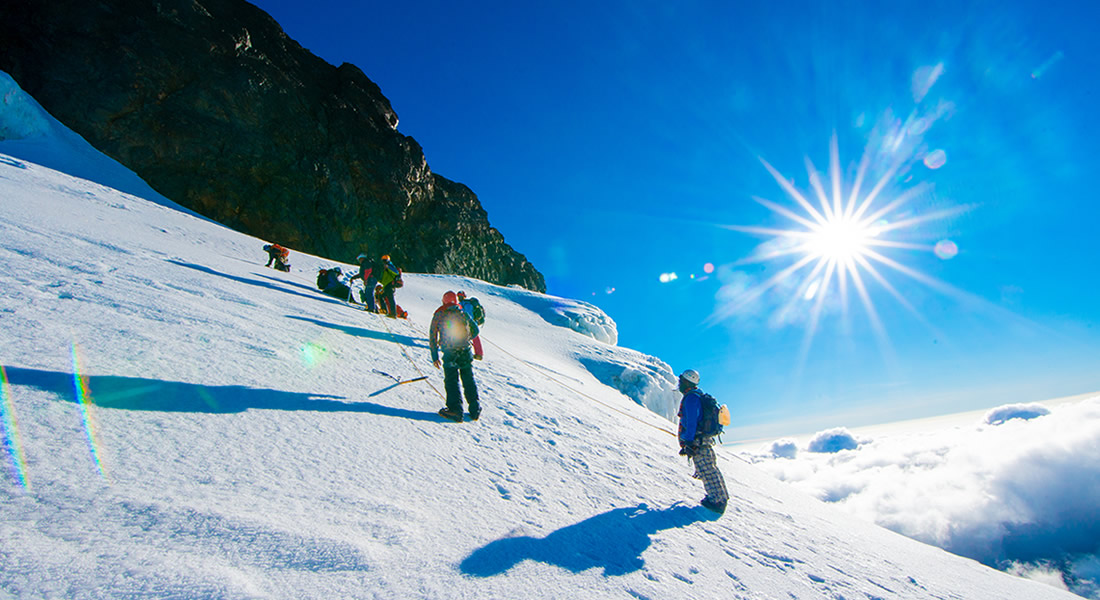The Uganda-Congo border cuts through Stanley’s Margherita Peak, which is the third-highest mountain in Africa and has six peaks, three of which are completely covered in snow. Rwenzori Mountains National Park is located in the western part of Uganda and protects the highest mountain ranges in Africa. The park, which is often referred to as the “mountains of the moon,” was established in 1991 and declared a UNESCO World Heritage Site in 1994. It was named by the Alexandrian geographer Ptolemy and spans an area of 996 square kilometres. The walks in the national park are renowned as some of the greatest in the world because they travel through stunning vegetative cover.

The park is more notable for its flora than for its wildlife. From the Bakonjo farmlands, the montane forest traverses through progressively distinct vegetative zones, including the bamboo zone, tangles of mimlopsis, a heath-Rapenea zone with enormous tree heathers, and a botanical community. About 70% of the parks are located above 2,500 metres in elevation, and the vegetation spans from tropical rainforest to alpines to snow. Each of the vegetative zones is home to a distinctively extraordinary number of rare plants and animals, many of which are native to the forest. Elephants, buffaloes, giant forest pigs, bushbucks, chimpanzees, leopards, and hyrax are among the park’s animals. Endangered species like the Rwenzori climbing mouse and the Rwenzori red duiker are also present but seldom observed.
Birding is a wonderful experience, especially in the montane environment because it offers the chance to see rare species like the blue Rwenzori turaco, long eared owl, bearded vulture, weaver, malachite sunbirds, and francolin, to name a few. Rwenzori Mountains National Park is home to over 200 species of birds, of which 19 are unique to the Rwenzori region.
Rwenzori Mountains National Park is renowned for its constantly shifting topography, which includes stunning valleys, lakes, hot springs, waterfalls, snow fields, glaciers, and forests.Despite being close to the equator where temperatures are predicted to be hot, it has six peaks, the majority of which are constantly covered in snow. These peaks include Savioa (462m), Mt. Gessi(4715m), Mt. Emin (4789m), Mt. Baker (4,843), Mt. Speke (4,890), and Mt. Stanley (5109m). After Mount Kenya and Mount Kilimanjaro, it is recognised as the tallest block mountain in Africa.
Mountain The popular mountain Rwenzori is noted for its climbing terrain. About 100,000 acres of land make up Rwenzori National Park in western Uganda, and the glaciers, waterfalls, and lakes there provide some of the most beautiful scenery in all of east Africa. The main activity in the national park is mountain climbing, which is organised by the Rwenzori Mountaineering Service team. They supply a guide, a cook and porters to aid with carrying the bulky supplies and meals. Visitors follow the primary path to go to the top of the circuit. The journey to and from the summit of the mountain takes seven days, with various stops along the way for recuperation.
The driest months to visit are July through August and December through February. For a better experience, it is recommended to pack a comfortable sleeping bag, rain gear, warm clothing, and boots that are equipped with crampons. Basic huts are available at the Nyakalengija circuit, and there is also lodging available in Queen Elizabeth National Park and Fort Portal.
Rwenzori Mountains National Park is accessible by road from Kampala by the fort gateway in both the north and south, via Mbarara, and via Queen Elizabeth National Park. From Kajansi or Entebbe, chatter flights may be arranged to Kasese, with connections available to the national park.
